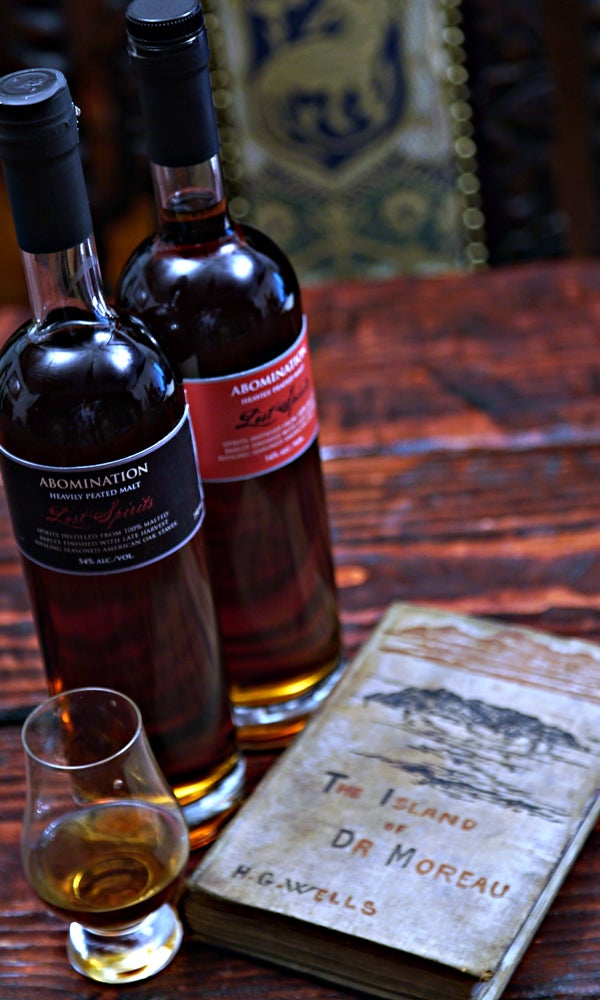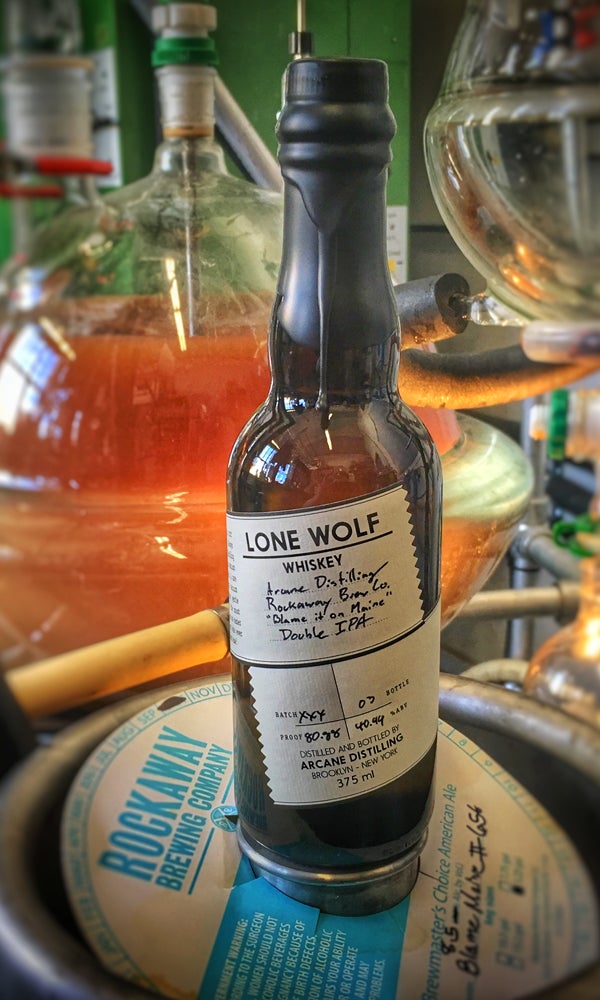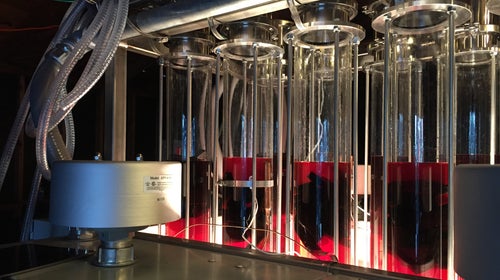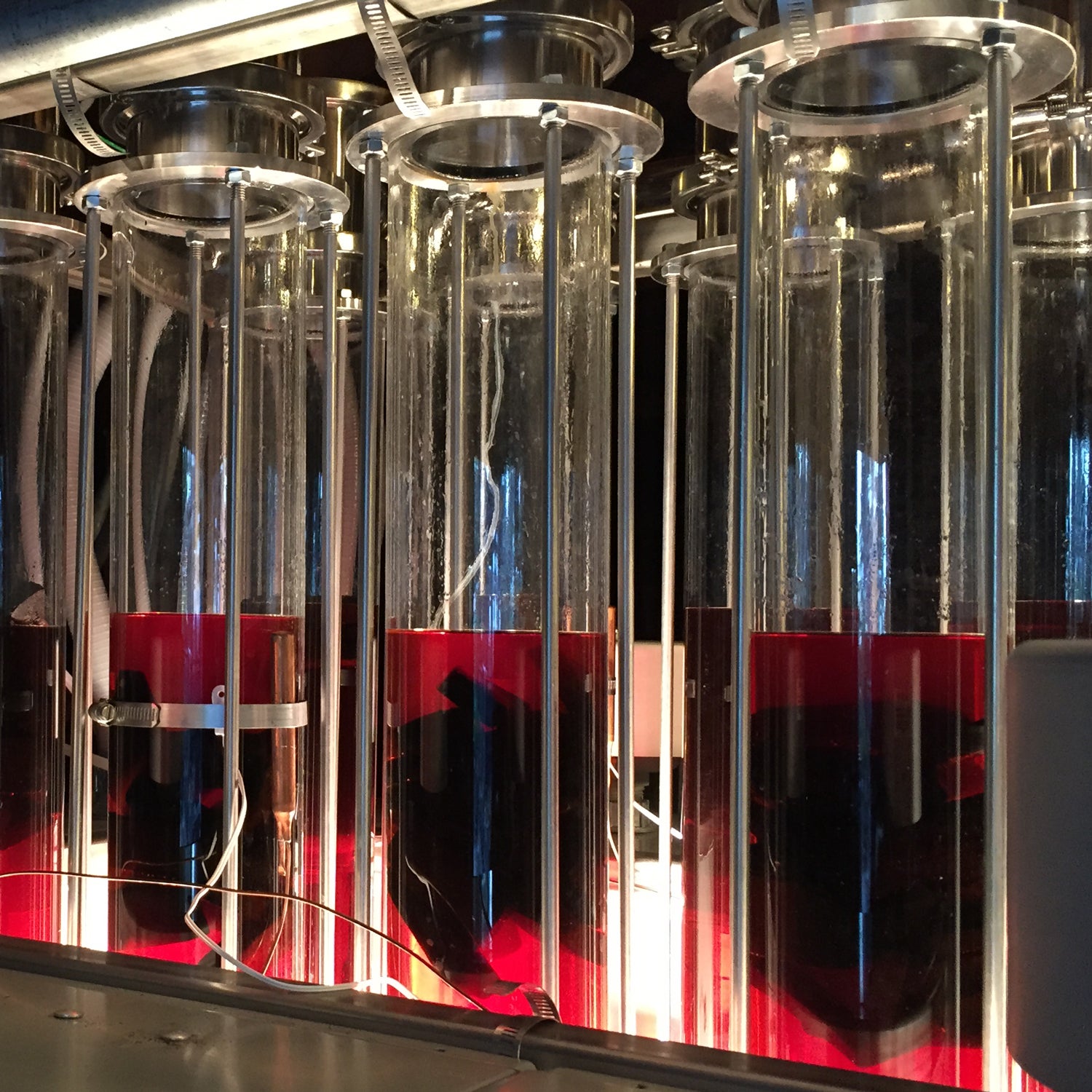As a booze writer, I’m supposed to be up for trying everything. But I always had a strict rule against sampling young whiskey, also known as white whiskey or moonshine—in other words, anything that’s never touched oak. A few years ago, a white whiskey with notes of stomach acid and antifreeze made its way into my glass. That spirit holds the distinct honor of being the only thing I’ve ever spit on an innocent bystander.
This year, I’m giving the stuff another shot for two reasons. First, I adore many other unaged spirits. If you’ve ever ordered a silver tequila or a clear rum, you know what I’m talking about. “People order these spirits all the time without realizing they’re the down-market version,” says Colin Spoelman, master distiller at in Brooklyn, New York.
Secondly, demand for whiskey is up and for the next few years. Makers didn’t forecast this demand 15 years ago, and to meet it, some are buying premade whiskey (mostly from the MGPI Distillery in Lawrenceburg, Indiana) and bottling it with their own label. Others are simply blending 15-year-old booze with newer stuff and quietly redesigning the label so it no longer boasts the whiskey’s age.
But some distillers are choosing a third option: proudly making unaged whiskey and convincing buyers to fall in love with it. Here’s why you should drink the stuff—and where to start.
It’ll Put More Local Options on Shelves
Innovation is a bold move in an industry that loves tradition. “Because we’ve always done it that way” seems to be the message of every other whiskey marketing campaign. “People are really stuck in the past in the beverage industry,” says David Kyrejko, the founder and master distiller at Brooklyn’s Arcane Distilling, which, despite its name, is leading the way on modern distilling practices.
Getting into the whiskey business is an expensive endeavor. According to , you’re looking at $350,000 to $1 million in startup costs for any sort of distillery. And this is before you can even start to age your product. “The biggest boon to young whiskey is that it can turn around fast, so new distilleries can pop up and come to market. And new distilleries won’t need to buy, bottle, and sell from established distilleries for the first five to ten years, as has been common practice,” says Arch Bernard, a longtime New York City bartender and spirits industry insider. “This will bring fresh ideas to whiskey.”
It Reduces Waste
Most whiskey barrels are made from American white oak, but that lumber source may not be around in a few generations. Although plenty of American white oak currently makes up the canopy (the big trees at the top of the forest), that could change. “In many of the Eastern hardwood forests, the understory trees are not oak. They’re maple and beech,” says Clint Patterson, a forester at Berea College in Kentucky. Those two species grow quickly, outpacing white oak seedlings and crowding out light. This means that the large American oaks we have now may end up being the last of their kind. Even though whiskey barrels make up a tiny portion of logging needs, this is bad news for whiskey makers.

Barrels can’t be made out of just any old white oak, either. “They can only use perfectly straight-grained boards, otherwise it’s too weak,” says Bryan Davis, co-founder of , a Los Angeles–based distillery. Traditionally, this has translated to a fair amount of waste, as cooperages discard what won’t work. But Davis’ proprietary process doesn’t require a barrel at all. It uses wood, but they simply commingle the booze and the wood in a tank, so the shape and strength of the wood doesn’t matter. Davis now buys scraps from cooperages. “At the moment, we’re a wood-neutral process,” he says, meaning his distillery doesn’t cut a single additional tree.
You’ll Be a Smarter Taster
There’s an easy way to fake being a whiskey expert: walk up to the bar and order the oldest bottle you see. “For so long, too much focus has been on age as a factor for making whiskey great, when there are so many other factors too,” Spoelman says.
Here’s the thing: aging can make just about any spirit taste good. Stick a crap whiskey into a barrel for 15 years and—voila!—drinkable stuff. But if you don’t age your spirit, you have to be much more careful about how you manage the distilling process. “There are spirit-focused distilleries and aging-focused distilleries,” Spoelman says. The first takes a superior understanding of chemistry to navigate well. The second just takes money and lots of time.
Of course, there’s no reason to ban aged whiskey, rye, and bourbon from your bar cart. (If you do, please send those bottles to us.) Young whiskey and old can live in harmony, says Bernard. The more you familiarize yourself with both, the more you’ll come to enjoy and understand each one.
Even better news: the stellar young whiskeys of today will be killer aged whiskeys in a decade or two. “The best whiskeys are definitely yet to come,” says Spoelman.
They Don’t Taste as Bad as You Think
Young whiskey can take on a range of flavor notes, depending on the ingredients it’s made from. When whiskey is distilled from corn, you’ll often get a sip that deceptively tastes like fresh summer corn on the cob or even roasted popcorn. When it’s made from barley, you’ll get caramel finishes and hints of malt. Young whiskey made from beer often has hoppy notes, which is actually nicer than it sounds. The last few times I’ve tasted young whiskeys, there were no spit takes—instead, I’ve been surprised by the firepower of some and the smoothness of others.
Here are the most interesting young whiskeys to taste first.
Lost Spirits
Co-founder Bryan Davis taught himself chemistry to save money on his whiskey startup in 2010. Within five years, he was making spirits that have the same chemical signature as aged booze but are , not years.
Try It: Lost Spirits’ Abomination is a heavily peated malt. It’s set to hit shelves any day now, and you can preorder it .

Arcane Distilling
Arcane Distilling’s , distilled from beer in a glass-vacuum still, never touches wood. “It actually tastes like sawdust if you age it in wood. I tried it as an experiment once,” says Kyrejko. His unaged stuff is “transparent, delicate, smooth. You can taste the hops and the malt in it, but the character is totally different from the beer it was made from,” says Bernard.
Try It: Lone Wolf is tough to find outside New York City, but if you see a bottle, which retails for $75, grab it. What you taste from month to month might vary—Kyrejko teams up with local New York brewers to distill different local beers into Lone Wolf.
King’s County Distillery Moonshine
This is nothing like the stuff your friend tried making in a homemade still in college. Made from New York–grown corn and English- and Scottish-grown barley, it’s smooth and drinkable neat but also lovely in a cocktail.
Try It: King’s County is currently available in . A 375-milliliter bottle goes for $35.


